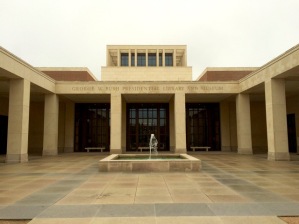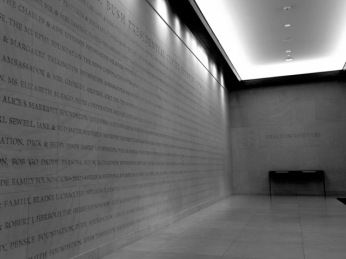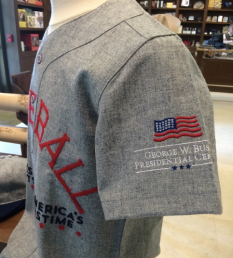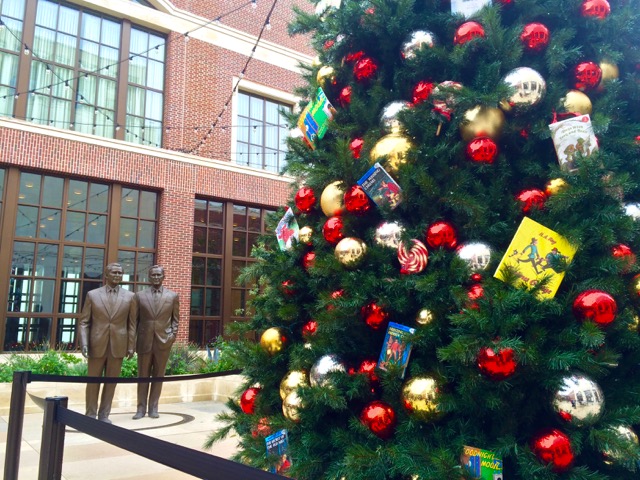With all due respect to Richard Connell, history is, in fact, the most dangerous game. History is dangerous because it requires constant vigilance, shepherding, judgement, exploration, and reconsideration. Moreover, history is the most poisonous when presented at its most anodyne, which is why so few challenge China’s presence in Tibet any more or do more than make funny marionette films about the Kim dynasty in North Korea. What’s to reconsider?
Because history is so dangerous, those in power attempt to dilute its vigor by diluting its sources, artifacts, and arguments. What Stalin understood well and Orwell explored better is that simply removing people from pictures or stories from newspapers is enough for them to be forgotten. No reason to argue against Leon Trotsky or Winston Smith. Just don’t mention them. Soon enough no one will remember they were around to mention.
For those not in power, the loudest story often wins the day (vis., The Donald). Repetition means truth (vis. Goebbels). It wouldn’t be true if it weren’t entertaining (vis., Spielberg). As Thucydides warned us some 2400 years ago, we must challenge our sources and our witnesses to history. If not, we fall prey to accepting the first story we find as somewhere between good enough and gospel, and both positions are dangerous:
So little pains do the vulgar take in the investigation of truth, and they accept readily the first story that comes to hand. On the whole, however, the conclusions I have drawn from the sources quoted may, I believe, safely be relied on. Assuredly they will not be disturbed either by the lays of a poet displaying the exaggeration of his craft [i.e., Homer], or by the compositions of the chroniclers that are attractive at truth’s expense. The subjects they treat are well out of the reach of evidence, and time has robbed most of them of historical value by enthroning them in the region of legend.
Thucydides, History of the Peloponnesian War, Book I

Take me to your leader…
The George W. Bush Presidential Library and Museum is far more the latter than the former. The books and documents are quietly and safely tucked away at the far end the east wing. One has to walk by the main welcome space and ticket kiosk, across a sparkling sample of shiny gifts given from various leaders to President Bush (though for what occasions is not mentioned. Oh, what would Ben Franklin say?), beyond the toilets and – harder still – past the Gift Shop to get to that pesky readin’.
That the library is situated on the campus of Southern Methodist University raises its own concerns (Full disclosure, I am a graduate of SMU, Class of 1989). Presidents usually give their libraries to their almae matres, which in this Bush’s case – well, in every Bush’s case – is Yale. Harvard could have had his library as well, given his MBA earned in 1975. But the girl who got him, Laura Welch, graduated from SMU with a BA in Education in 1968. When Yale and Harvard both, rather loudly, declined the privilege of hosting his monument, the Bush Library became something of a, well, political football. Baylor and the University of Dallas put their names forward as potential receivers, for reasons even more tenuous than SMU’s. Despite the establishment conservatism of the campus, a notable minority of the SMU community hoped to keep the center off the campus. But when does a private academic institution turn away deep money?
 The building is austere, geometric, rather cold − odd traits given what even his political adversaries described as an affable, clubby, good-ole-boy. The interior is colder still. One enters to the right, along the Freedom Registry. The registry itself is to one’s right upon entering, and the table, the only organic object in the wing, invites the visitor by suggesting she or he can sign her or his name into the record book. Be a part of freedom! But no, if you’re visiting during regular hours with the hoi poloi , you clearly don’t have the capital gains income to be worthy of the Freedom Registry. Move along, please.
The building is austere, geometric, rather cold − odd traits given what even his political adversaries described as an affable, clubby, good-ole-boy. The interior is colder still. One enters to the right, along the Freedom Registry. The registry itself is to one’s right upon entering, and the table, the only organic object in the wing, invites the visitor by suggesting she or he can sign her or his name into the record book. Be a part of freedom! But no, if you’re visiting during regular hours with the hoi poloi , you clearly don’t have the capital gains income to be worthy of the Freedom Registry. Move along, please.
For a mere $14, I got to play “Decision Points” with The W. I could reconsider the invasion of Iraq or its subsequent surge, Hurricane Katrina, dealing with the Aids Crisis, (Oh, that reminds me: W did do something for the betterment of humanity.) or the financial meltdown after the housing bubble. (My bad: the bubble is not mentioned. The crisis arose ex nihilo, though AIG in London seemed to have something to do with it.) If one chooses any of the options not taken by the W, he magically appears to point out why our decision was wrong. Tap the one he took, (For example, send a further 30,000 troops in 2007 for a war we were told we won back in 2003.) and he’ll give you a gold star for spreading democracy. What I smelled seemed more like spreading manure. Nevertheless, as the park reminds us time and again, through fetishized remains of that horrible day, he took up the call after 9/11 to defend our nation, and the World Trade Center has not been attacked since. ‘Cause look, that’s what deciders do – heh – they decided and – heh – act to bring peace to all the peoples of the earth.
Just as damning to his tenure is how little is said of Dick Cheney, Donald Rumsfeld, or or Tom Wolfowitz. By which I mean, “Nothing is said of…” Historians should always be circumspect about making arguments from silence. Political animals, however, should scream out against it. Silence is what power wants more than anything: the silence of those expected to accept what they are told.
To view it all (To be fair, I was pressed for time so I did not give every bay of the glory of the Bush Dynasty the attention it demanded.), one must cross back and forth across the main atrium. The upper tier serves as a backdrop to a striking video that is mesmerizing in its vistas of Texas scenery and people doing all kinds of peoply things. The high-def multi-media presentation seemed starkly and sadly and unintentionally apropos: Beautiful and engaging, yet entirely irrelevant to Bush or his presidency. I felt like we were to stare into the light so that the Neutralyzer could do its work to erase memories of the last couple of hours – or of the decade after 2000.
A couple of other notable presences can be found at the mausoleum of the W presidency: Laura Bush and George H.W. Bush. Their names and voices and likenesses and recommended books are sprinkled throughout. No doubt that W loves both dearly, thoroughly, and honestly. Why would he not want them as part of his self-preservation? Or were they crutches meant to carry the legacy? Perhaps they the ballast to a sinking ship?
The history peddled here is easily debunked, laughably dismissed. The income inequality that began to slide precipitously in 2006 is now so bad even Republicans have to pay lip-service to doing something about it. The slam-dunk democracy that was to be dropped upon Iraq has killed nameless tens of thousands of innocents since 2003, and we are now having to cut deals with the Taliban in Afghanistan anyway (Obama’s “good war”) to take the pressure off there while we claim to degrade ISIS/ISIL in Homs. Or was it Brussels?

Play ball with me!
And yet, I’m almost embarrassed to admit that what infuriated me most during this entire moronic exercise of gilding the turd was the Gift Shop, and in particular a limited-edition baseball jersey with the number “43” on it. (W was the 43rd President, you see.) George W owns the Texas Rangers, and he is certainly a baseball fan. So a pseudo-jersey in his center’s gift shop makes sense. If it were at all associated with Texas or with his Rangers.
This limited-edition bit of detritus was designed by Ebbets Field Flannels, who deserve no particular approbation for completing an order. The jersey harkens a ‘vintage’ or ‘classic’ look, and according to the store website, “This baseball jersey is made out of 1950s-era wool blend baseball cloth. It features sewn-on felt lettering and detail. The George W. Bush Presidential Center logo is embroidered on the sleeve.” It sells for $243.
Ebbets Field is where the Brooklyn Dodgers played until they picked up stakes for Los Angeles. The Dodgers broke the color barrier (aka racial segregation) in 1947. Mr. Robinson wore 42. So W wants to associate himself with the Dodgers? With doing something heroic like breaking the color barrier in a civil society that already had touted for 160-odd years that all (white, college-legacy) men are created equal? Why doesn’t he fess up to the baseball team he owns, and could influence? Why does he want to sell instead a jersey that implies everything about an honorable man who put up with some of the vilest racist epithets and threats just this side a lynching, just to play a game? The only comparison W could dare make is that not a few pitchers threw baseballs at Mr. Robinson’s head – to kill him – and a journalist once threw a couple of shoes at W’s head. George W’s subtle historical association with Jackie Robinson is shameful. It is also dangerous because I fear the people who have bought the jerseys saw no cognitive dissonance between what the jersey is, and what it gently claims to be. History at its most damning precisely because it is presented in so pretty a package.
In an effort to calm my percolating anger, I stepped back to find the all-important café. As I entered the outer courtyard, I stumbled into Bush’s library.